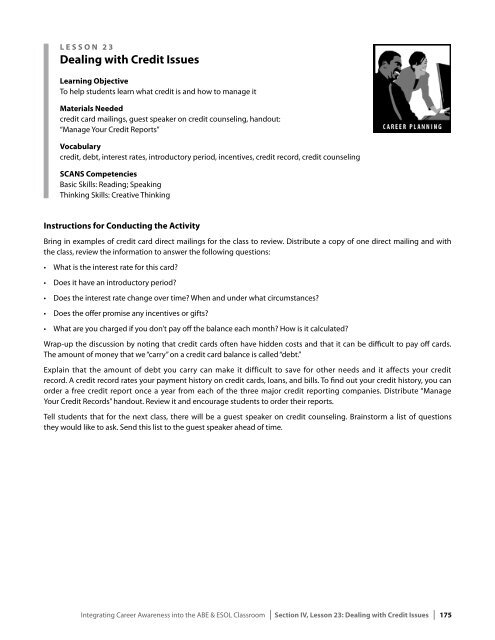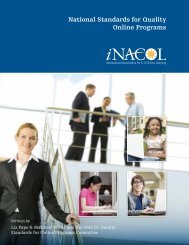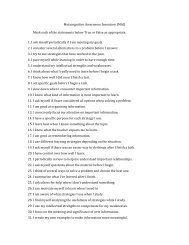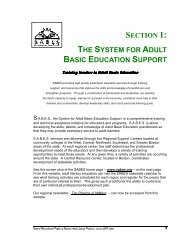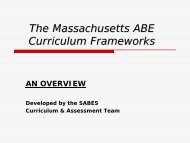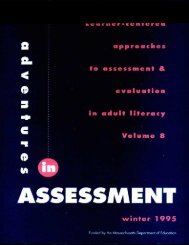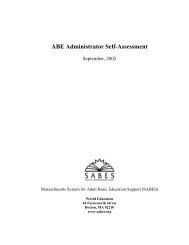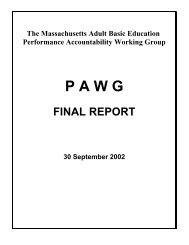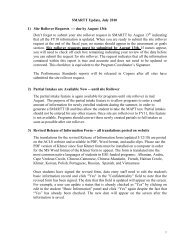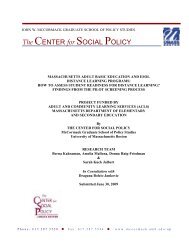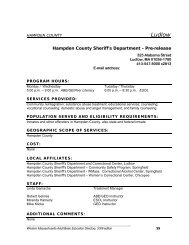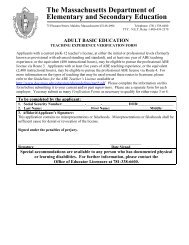Integrating Career Awareness into the ABE/ESOL Classroom - SABES
Integrating Career Awareness into the ABE/ESOL Classroom - SABES
Integrating Career Awareness into the ABE/ESOL Classroom - SABES
- No tags were found...
Create successful ePaper yourself
Turn your PDF publications into a flip-book with our unique Google optimized e-Paper software.
L e s s o n 2 3<br />
Dealing with Credit Issues<br />
Learning Objective<br />
To help students learn what credit is and how to manage it<br />
Materials Needed<br />
credit card mailings, guest speaker on credit counseling, handout:<br />
“Manage Your Credit Reports”<br />
Vocabulary<br />
credit, debt, interest rates, introductory period, incentives, credit record, credit counseling<br />
SCANS Competencies<br />
Basic Skills: Reading; Speaking<br />
Thinking Skills: Creative Thinking<br />
Instructions for Conducting <strong>the</strong> Activity<br />
Bring in examples of credit card direct mailings for <strong>the</strong> class to review. Distribute a copy of one direct mailing and with<br />
<strong>the</strong> class, review <strong>the</strong> information to answer <strong>the</strong> following questions:<br />
• What is <strong>the</strong> interest rate for this card?<br />
• Does it have an introductory period?<br />
• Does <strong>the</strong> interest rate change over time? When and under what circumstances?<br />
• Does <strong>the</strong> offer promise any incentives or gifts?<br />
• What are you charged if you don’t pay off <strong>the</strong> balance each month? How is it calculated?<br />
Wrap-up <strong>the</strong> discussion by noting that credit cards often have hidden costs and that it can be difficult to pay off cards.<br />
The amount of money that we “carry” on a credit card balance is called “debt.”<br />
Explain that <strong>the</strong> amount of debt you carry can make it difficult to save for o<strong>the</strong>r needs and it affects your credit<br />
record. A credit record rates your payment history on credit cards, loans, and bills. To find out your credit history, you can<br />
order a free credit report once a year from each of <strong>the</strong> three major credit reporting companies. Distribute “Manage<br />
Your Credit Records” handout. Review it and encourage students to order <strong>the</strong>ir reports.<br />
Tell students that for <strong>the</strong> next class, <strong>the</strong>re will be a guest speaker on credit counseling. Brainstorm a list of questions<br />
<strong>the</strong>y would like to ask. Send this list to <strong>the</strong> guest speaker ahead of time.<br />
<strong>Integrating</strong> <strong>Career</strong> <strong>Awareness</strong> <strong>into</strong> <strong>the</strong> <strong>ABE</strong> & <strong>ESOL</strong> <strong>Classroom</strong> | Section IV, Lesson 23: Dealing with Credit Issues | 175


